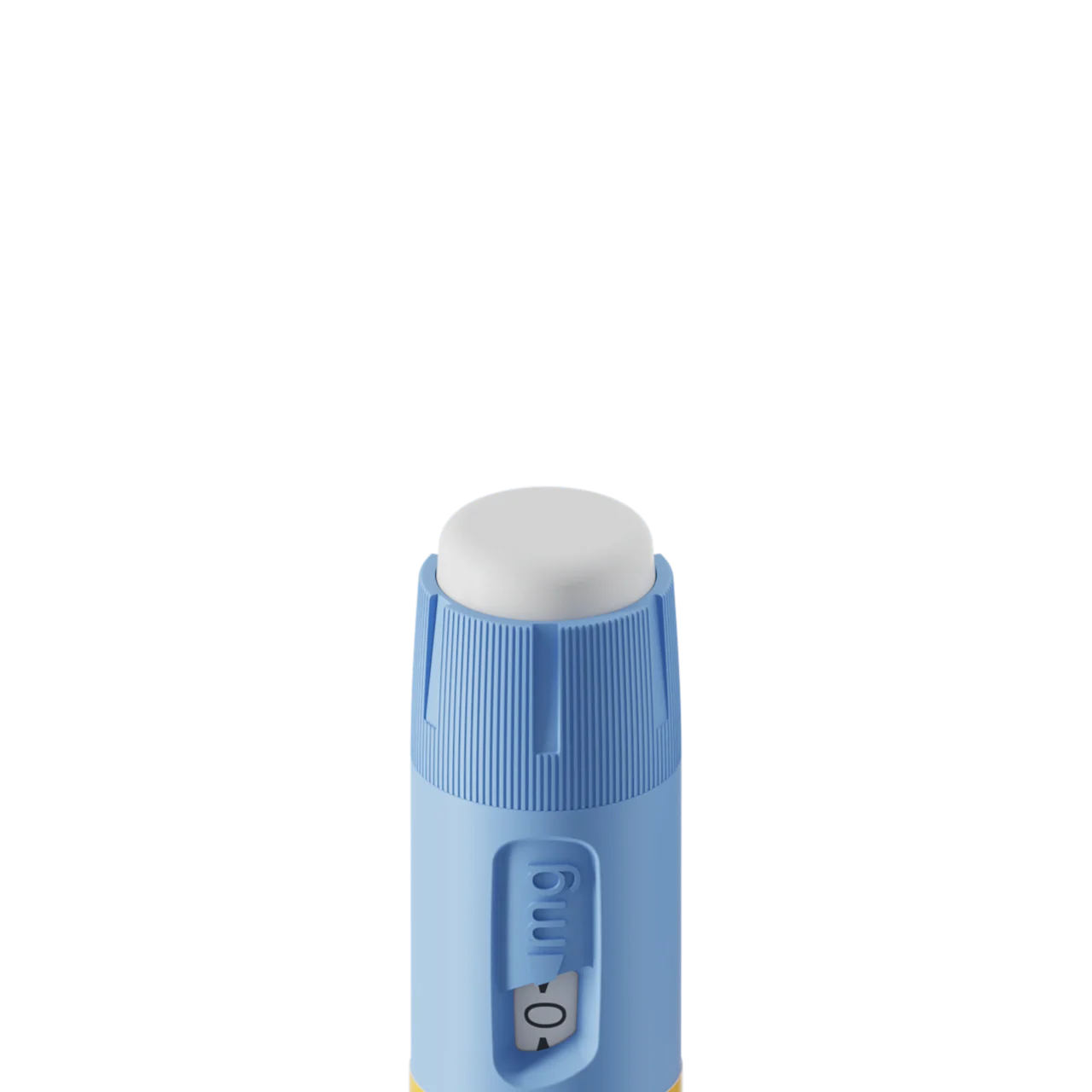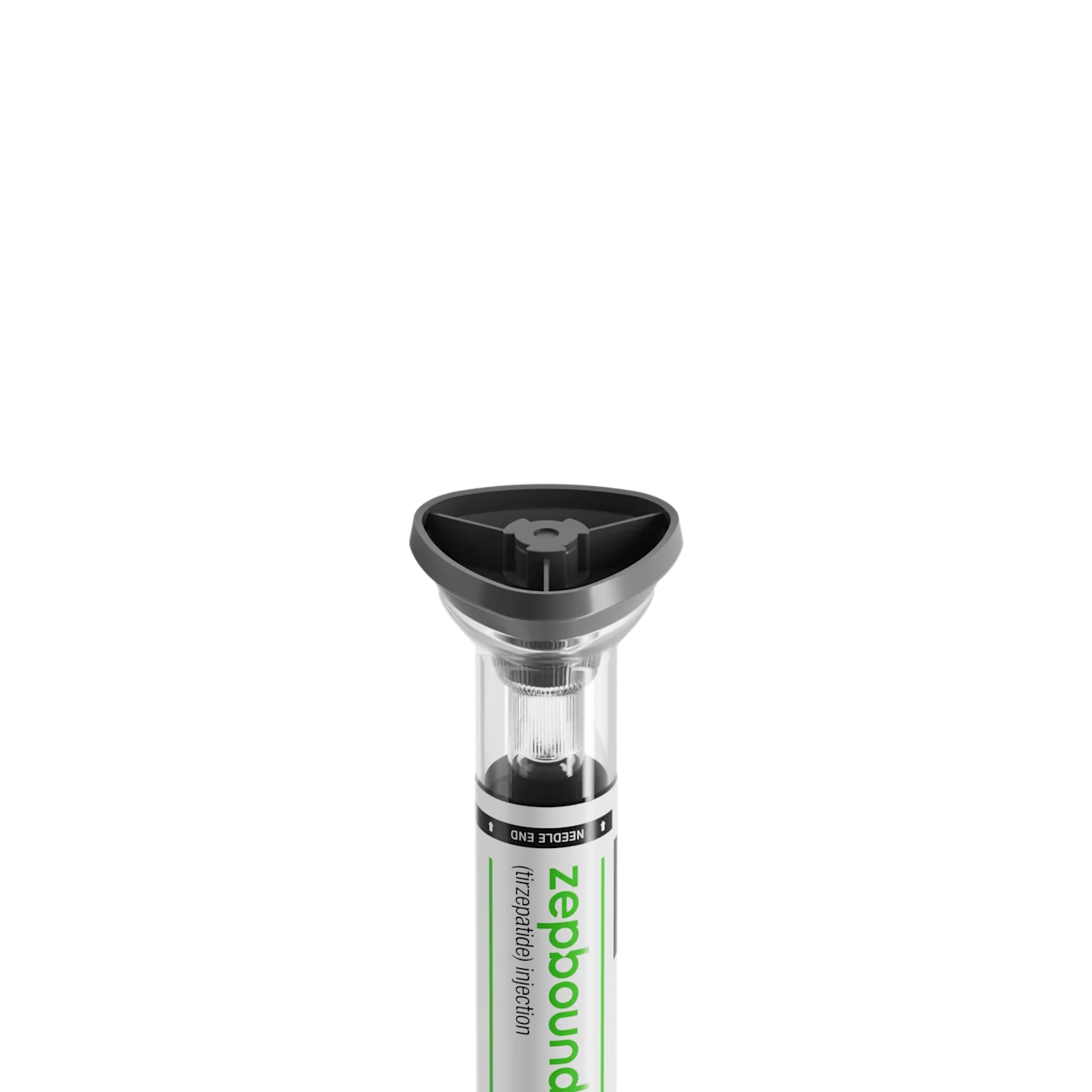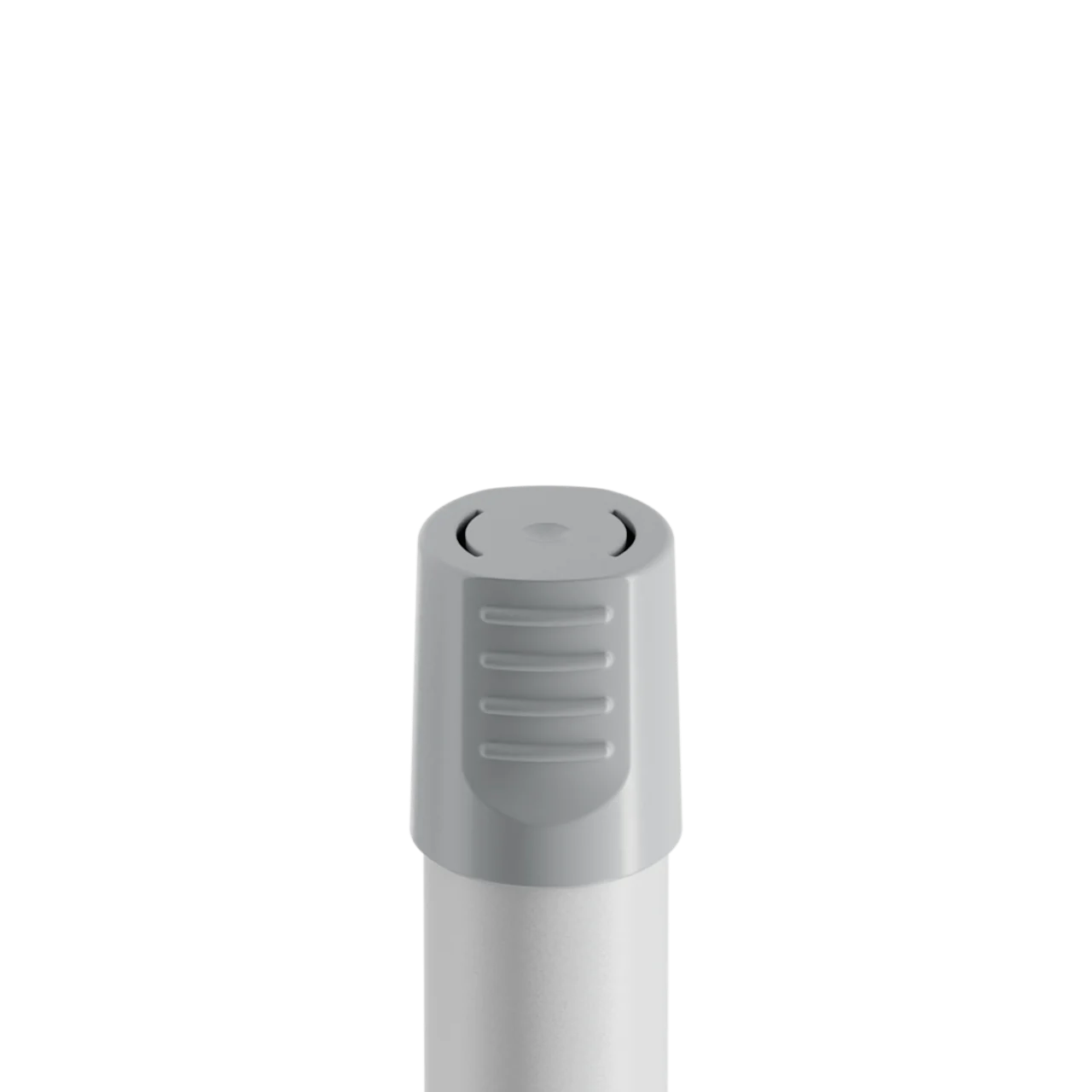Key takeaways
Total daily energy expenditure (TDEE) is the number of calories your body burns daily; it varies among individuals and is based on certain factors (e.g. age, and activity level).
TDEE includes the energy required for basic bodily functions (resting energy expenditure, or REE) and physical activity (non-resting energy expenditure, or NREE).
You can calculate TDEE using a TDEE calculator or by following the Mifflin-St Jeor equation and multiplying that number by an activity factor.
Understanding the concept of TDEE can help with weight loss by acting as a guideline for calorie intake and activity amount.
Here's what we'll cover
Here's what we'll cover
Here's what we'll cover
Key takeaways
Total daily energy expenditure (TDEE) is the number of calories your body burns daily; it varies among individuals and is based on certain factors (e.g. age, and activity level).
TDEE includes the energy required for basic bodily functions (resting energy expenditure, or REE) and physical activity (non-resting energy expenditure, or NREE).
You can calculate TDEE using a TDEE calculator or by following the Mifflin-St Jeor equation and multiplying that number by an activity factor.
Understanding the concept of TDEE can help with weight loss by acting as a guideline for calorie intake and activity amount.
It’s a tale (read: fact) as old as time: Consuming fewer calories than you burn is crucial for weight loss. Knowing exactly how many calories you’re expending, though, can be tricky. That’s where TDEE comes in.
What is TDEE, you ask? TDEE, or total daily energy expenditure, describes the number of calories you burn on a daily basis. It’s a measure of your metabolism, factoring in how many calories you burn when you’re active, resting, and digesting. In other words, TDEE represents the total energy needed to support your daily functions and activities and maintain your current weight. So, understanding this measurement can help you plan your calorie intake — and activity level — to reach your weight loss goals.
Ahead, we take a closer look at TDEE and explain how to calculate it and use it as a tool in your weight loss journey. We even discuss methods to increase it.
What is TDEE?
Short for total daily energy expenditure, TDEE is a measure of how many calories (or energy) your body burns (or expends) over a 24-hour period. Various factors can affect your TDEE, including your age, sex, height, weight, activity level, diet, and body composition (i.e. proportion of body fat vs. fat-free mass, such as muscle and bones).
Many of these factors can change over time, and so can your TDEE. For example, after about age 60, your TDEE generally declines by nearly 1% each year. Older people may have less muscle mass and tend to experience hormonal changes that can slow their metabolism (think: menopause and low testosterone, both of which often accompany aging).
Speaking of muscle, it’s more metabolically active than fat. Meaning it can burn more calories at rest (i.e. when you're relaxing). So, people who have more muscle mass may have a higher TDEE.
In general, people who are older, have more body fat than muscle, and maintain a sedentary lifestyle tend to have a lower TDEE. On the other hand, people who are younger, more muscular, and more active tend to have a higher TDEE.
Your TDEE represents the total number of calories your body burns daily. This includes calories burned when resting (aka your resting energy expenditure, or REE) and when active (aka non-resting energy expenditure, or NREE).
Let's take a closer look at these two types of energy expenditures.
Rx weight loss with Ro
Get access to prescription weight loss medication online
Resting energy expenditure (REE)
Your resting energy expenditure, or REE, describes how many calories your body burns over a 24-hour period when at rest. “Resting” doesn’t necessarily mean you’re lounging on the couch watching TV. Rather, it describes your body in a state of absolute mental, physical, and digestive rest. Essentially, this is the baseline number of calories your body burns to run the vital functions that keep you alive, such as breathing and circulating blood.
You may also see REE referred to as your resting metabolic rate (RMR) or basal metabolic rate (BMR). Technically, BMR is the more accurate measure of metabolism, primarily determined by your fat-free mass (e.g. muscle, bone). It's slightly lower than RMR, which can be influenced by external factors such as stress or illness. While your age, sex, and genetics also play a role in your REE, your body composition — especially your fat-free mass — makes the biggest difference.
Whatever you call it — RMR, BMR, or REE — your resting energy expenditure makes up the majority of your TDEE, accounting for around 60% of the measurement.
Find out your BMR
Provide your biometric data to get started.

0
Cal Daily
Basal metabolic rate is an estimate of how many calories you'd burn if you were to do nothing but rest for a day.
Non-resting energy expenditure (NREE)
Then you have your non-resting energy expenditure, or NREE, which is the number of calories your body burns when active. In other words, your NREE is everything else that’s not factored into your REE. This includes both when you’re actively exercising as well as when you’re going about your daily activities, such as eating, walking, or talking.
The more active you are, the more energy your body burns. People who live an active lifestyle, have an active job, or work out frequently tend to have a higher NREE than those who don’t exercise as much and have a sedentary lifestyle or job.
There are three main components of NREE:
Thermic effect of food (TEF)
Exercise activity thermogenesis (EAT)
Non-exercise activity thermogenesis (NEAT)
Thermic effect of food (TEF): Also called diet-induced thermogenesis (DIT), TEF describes the number of calories your body burns simply through digesting the food you eat. In total, TEF makes up about 8%–15% of your TDEE.
Your body expends different amounts of energy to break down different macronutrients, the most important of which are protein, carbohydrates, and fats. Protein uses the most energy, while fat uses the least. Your body may burn about 20%–30% of the calories from protein to digest protein itself. Meanwhile, it only burns about 5%–10% of carbohydrate calories and 0%–3% of fat calories when digesting those macros.
Exercise activity thermogenesis (EAT): The second component of NREE, EAT describes the number of calories your body burns when you’re actively exercising (think: purposely trying to increase your heart rate). The portion of your TDEE that EAT represents can vary widely depending on how much you work out. For example:
If you exercise on a regular basis, EAT can make up 15%–30% of your TDEE.
If you work out a few hours a week, it may only represent 1%–2% of your TDEE.
Non-exercise activity thermogenesis (NEAT): This describes the number of calories your body burns at any time other than rest. Basically, NEAT represents the energy burned through the physical activity of daily life: standing up, reading a book, talking on the phone, or walking around. It’s any form of activity that is not specifically structured exercise.
Like EAT, NEAT’s portion of TDEE can vary widely based on the level of sedentariness of your lifestyle. For example:
If you are more sedentary (e.g. work a desk job, sit down during most of the day), NEAT may only represent 6%–10% of your TDEE.
If you maintain a super active lifestyle, NEAT can represent 50% of your TDEE.
How is TDEE calculated?
In general, TDEE calculators first estimate your BMR based on your height, weight, age, and sex. From there, they apply a physical activity multiplier, which reflects how active you are, to your BMR.
There are a few different ways you can calculate your TDEE. One of the easiest is to use a TDEE calculator, such as the one offered by Ro.
Find out your daily calorie needs
Quickly calculate your total daily energy expenditure to optimize your diet, fitness, and weight goals.
Maintain your current weight
----
CAL DAILY
Lose one pound per week
----
CAL DAILY
This TDEE calculator is for informational purposes only and not a substitute for medical advice. Individual needs vary. Consult a healthcare provider before making changes. Eating fewer than 1,200 (women) or 1,500 (men) calories a day is not recommended.
Researchers have developed different formulas to calculate BMR, including the Harris-Benedict equation and the Mifflin-St Jeor equation. Of these, the Mifflin-St Jeor is considered to be the most reliable and the one most typically used today — such as in our calculator.
TDEE and weight loss
The most straightforward way to lose weight is to consume fewer calories than you burn. This is why it can be helpful to know your TDEE, which is the number of calories you must eat daily to maintain your current weight. So, if you’re trying to lose weight, you’ll need to eat fewer calories than your TDEE.
But calorie counting isn’t everything and may not be sustainable long-term. That’s where increasing your NEAT and EAT can come into play.
First, a reminder:
NEAT is the energy you burn when not actively exercising, including the calories you burn while eating and living your life.
EAT is the energy you burn when actively working out.
The more you work out, the more calories you can burn. And research shows that combining diet and exercise is the best way to achieve long-term weight loss and maintenance. Plus, if you’re exercising, you may not need to cut calories as drastically, which can make it easier to get sufficient nutrients and stick to your weight loss goals.
Increasing your NEAT can also have a profound effect on your TDEE since it’s the energy you burn just going about your day. For example, one study found that switching to a desk chair that promotes fidgeting (such as one with a leg bar) can boost TDEE by as much as 30%.
How to use TDEE to lose weight
Once you know your TDEE, you can use the information to lose weight faster. By increasing the calories burned during exercise and non-exercise time — your NEAT and EAT — you can increase your TDEE and burn more calories overall.
Increase the amount and level of exercise
When you increase your EAT, you can increase the amount of calories burned on a daily basis, which can lead to weight loss.
So, how do you boost your EAT?
Spend more time exercising, be it by adding another workout to your weekly routine or lengthening the duration of your current sessions. The Centers for Disease Control and Prevention (CDC) recommends that adults aim for at least 150 minutes of moderate-intensity activity (e.g. brisk walking) or 75 minutes of vigorous-intensity activity (e.g. jogging, running)each week.
Level up the intensity of your workouts, such as by swapping light- or moderate-intensity workouts for high-intensity ones that allow for even more of a calorie burn. If you typically walk for exercise, you might trade one (or more) of your usual strolls for a run, bike, or hike.
Start strength training. Resistance exercises such as weight lifting build muscle. This can help you avoid muscle loss that can occur during weight loss, while also adding muscle to your body composition so that you burn more calories when at rest. In addition to the aforementioned recommendations, the CDC says adults should also dedicate at least two days a week to strength training. So, if you’re new to these types of exercises, start there, and you can always increase frequency.
Move more throughout the day
Increasing your EAT can help you lose weight. But increasing your NEAT can be even more powerful since it’s what you spend most of your time doing. Adding more movement to your day may be easier than you think and doesn’t require formal exercise (although that helps, too). Try these tips:
When you drive somewhere, park further away so you have to walk more to get there.
Walk or bike instead of driving.
Take the stairs over the elevator.
When you’re doing a sedentary activity, such as working at the computer or watching TV, take regular breaks to stand up, walk around, or stretch.
Do more chores around the house.
Transition sitting activities to walking ones. For example, if you usually sit while talking on the phone, go for a walk instead.
Take up a new active hobby, such as pickleball or gardening.
Use a standing or walking desk or a fidget-friendly chair.
Follow a healthy diet
Changing up your diet — specifically, making it more nutritious and balanced — is another way to use TDEE to lose weight. Here are a few strategies:
Eat more protein. This can help boost TEF since your body uses more energy to digest protein. Protein can also help you build more muscle and increase your metabolism — two additional factors that can contribute to higher TDEE and support weight loss over time.
Focus on nutrient-rich foods. Consuming more nutritious foods in general can also help improve TEF. Opt for whole foods packed with protein, fiber, whole grains, vitamins, and minerals.
Cut back on booze and sugary beverages. In addition to limiting your intake of processed foods, reducing alcohol, soda, and sugary drinks can also help.
Bottom line
Short for total daily energy expenditure, TDEE is a metric that represents the calories burned on a daily basis. It’s made up of your resting energy expenditure (REE) and non-resting energy expenditure (NREE). REE makes up the bulk of TDEE, followed by TEF, EAT, and NEAT — the three components of NREE. And while you’ve made it to this point in the article, you may very well be wondering, “what do these all stand for again?” — after all, there have been a lot of acronyms thrown around. So, one more time for the folks in the back (aka everyone):
TDEE (total daily energy expenditure): number of calories your body needs to function daily and maintain its current weight
REE (resting energy expenditure): number of is the calories burned when resting (i.e. performing basic bodily functions)
NREE (non-resting energy expenditure): number of calories burned when active (i.e. working out as well as going about daily activities). It’s composed of the following three components.
TEF (thermic effect of food): number of calories burned while digesting food
EAT (exercise activity thermogenesis): number of calories burned when actively exercising (think: purposely trying to increase your heart rate)
NEAT (non-exercise thermogenesis): number of calories burned through the physical activity of daily life
Once you know your TDEE, you can adjust your energy balance with more movement (both from dedicated exercise and throughout the day) and dietary changes to help lose weight. This may involve taking the intensity and/or duration of your workouts up a notch, finding opportunities to move and stand more during the day, and/or maintaining a healthy, balanced diet. But while TDEE can be a helpful tool during a weight loss journey, other evidence-based strategies — e.g. balanced nutrition, regular physical activity, getting ample sleep, etc. — are equally important for sustainable results.
DISCLAIMER
If you have any medical questions or concerns, please talk to your healthcare provider. The articles on Health Guide are underpinned by peer-reviewed research and information drawn from medical societies and governmental agencies. However, they are not a substitute for professional medical advice, diagnosis, or treatment.
References
Anthanont, P. & Jensen, M. D. (2016). Does basal metabolic rate predict weight gain?. The American Journal of Clinical Nutrition, 104(4), 959–963. doi: 10.3945/ajcn.116.134965. Retrieved from https://pmc.ncbi.nlm.nih.gov/articles/PMC5039810/
Bosy-Westphal, A., Hägele, F. A., & Müller, M. J. (2021). What is the impact of energy expenditure on energy intake? Nutrients, 13(10), 3508. doi: 10.3390/nu13103508. Retrieved from https://www.mdpi.com/2072-6643/13/10/3508
Calcagno, M., Kahleova, H., Alwarith, J., et al. (2019). The Thermic Effect of Food: A review. Journal of the American College of Nutrition, 38(6), 547–551. doi: 10.1080/07315724.2018.1552544. Retrieved from https://www.tandfonline.com/doi/full/10.1080/07315724.2018.1552544
Johns, D. J., Hartmann-Boyce, J., Jebb, S. A., et al. (2014). Diet or Exercise Interventions vs Combined Behavioral Weight Management Programs: A Systematic Review and Meta-Analysis of Direct Comparisons. Journal of the Academy of Nutrition and Dietetics, 114(10), 1557–1568. doi: 10.1016/j.jand.2014.07.005. Retrieved from https://www.jandonline.org/article/S2212-2672(14)01055-7/fulltext
Koepp, G. A., Moore, G. K., & Levine, J. A. (2016). Chair-based fidgeting and energy expenditure. BMJ Open Sport & Exercise Medicine, 2(1), e000152. doi: 10.1136/bmjsem-2016-000152. Retrieved from https://pmc.ncbi.nlm.nih.gov/articles/PMC5117084/
Levine, J. A. (2002). Non-exercise activity thermogenesis (NEAT). Best Practice & Research. Clinical Endocrinology & Metabolism, 16(4), 679–702. doi: 10.1053/beem.2002.0227. Retrieved from https://pubmed.ncbi.nlm.nih.gov/12468415/
MacKenzie-Shalders, K., Kelly, J. T., So, D., et al. (2020). The effect of exercise interventions on resting metabolic rate: A systematic review and meta-analysis. Journal of Sports Sciences, 38(14), 1635–1649. doi: 10.1080/02640414.2020.1754716. Retrieved from https://www.tandfonline.com/doi/abs/10.1080/02640414.2020.1754716
MedlinePlus. (2022). Aging changes in body shape. Retrieved from https://medlineplus.gov/ency/article/003998.htm
Medscape. (2020). Mifflin-St Jeor Equation. Retrieved from https://reference.medscape.com/calculator/846/mifflin-st-jeor-equation
Melanson, E. L. (2017). The effect of exercise on non-exercise physical activity and sedentary behavior in adults. Obesity Reviews: An Official Journal of the International Association for the Study of Obesity, 18 Suppl 1(Suppl 1), 40–49. doi: 10.1111/obr.12507. Retrieved from https://pmc.ncbi.nlm.nih.gov/articles/PMC5388457/
Ostendorf, D. M., Caldwell, A. E., Creasy, S. A., et al. (2019). Physical Activity Energy Expenditure and Total Daily Energy Expenditure in Successful Weight Loss Maintainers. Obesity (Silver Spring, Md.), 27(3), 496–504. doi: 10.1002/oby.22373. Retrieved from https://pmc.ncbi.nlm.nih.gov/articles/PMC6392078/
Parmar, R. M. & Can, A. S. (2023). Physiology, Appetite And Weight Regulation. StatPearls. Retrieved from https://www.ncbi.nlm.nih.gov/books/NBK574539/\
Pethusamy, K., Gupta, A., & Yadav, R. (2022). Basal Metabolic Rate (BMR). Springer eBooks, 620–621. doi: 10.1007/978-3-319-55065-7_1429. Retrieved from https://link.springer.com/referenceworkentry/10.1007/978-3-319-47829-6_1429-1
Pontzer, H., Yamada, Y., Sagayama, H., et al. (2021). Daily energy expenditure through the human life course. Science (New York, N.Y.), 373(6556), 808–812. doi: 10.1126/science.abe5017. Retrieved from https://pmc.ncbi.nlm.nih.gov/articles/PMC8370708/
Popson, M. S., Dimri, M., & Borger, J. (2023). Biochemistry, Heat and Calories. StatPearls. Retrieved from https://www.ncbi.nlm.nih.gov/books/NBK538294/
Sánchez López de Nava, A. & Raja, A. (2022). Physiology, Metabolism. StatPearls. Retrieved from https://www.ncbi.nlm.nih.gov/books/NBK546690/
Sundell, J. (2011). Resistance Training Is an Effective Tool against Metabolic and Frailty Syndromes. Advances in Preventive Medicine, 2011, 984683. doi: 10.4061/2011/984683. Retrieved from https://pmc.ncbi.nlm.nih.gov/articles/PMC3168930/
von Loeffelholz, C. & Birkenfeld, A. L. (2022). Non-Exercise Activity Thermogenesis in Human Energy Homeostasis. Endotext. Retrieved from https://www.ncbi.nlm.nih.gov/books/NBK279077/


















